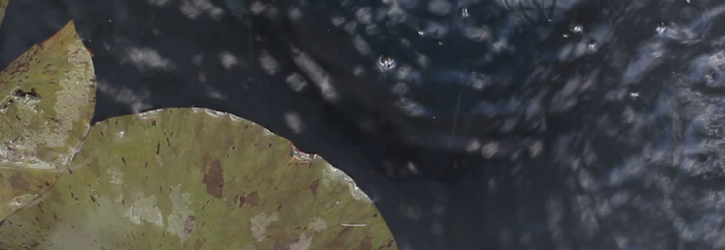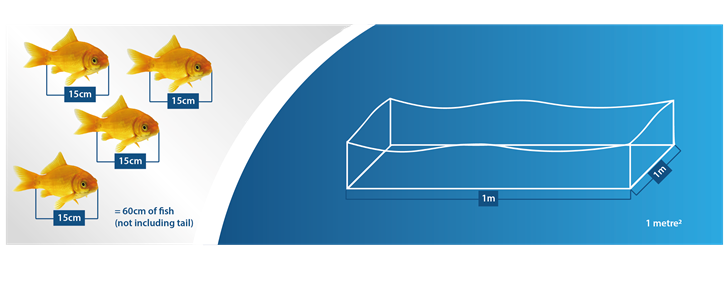How Many Fish Can I Have In My Pond?
When determining how many fish to add into a pond there are a variety of factors to bear in mind, size and type of fish, the quality of filtration, including the turn over of water through the filter, feeding levels… It’s enough to give you a headache!
Guidelines for fish stocking levels vary from different bodies of expertise. However, as a member of OATA (Ornamental Aquatic Trade Association) and having a team of aquarist experts within Blagdon, we believe that the key to keeping fish healthy is good water quality and space to swim. This includes good oxygenation that comes from surface area and circulation.

A couple of things to consider:
Firstly, what stocking level gives the fish space to grow and move about freely?
Secondly, what would happen if there were a power cut and the ‘life support system’ was off? The balance is stocking the pool to a level where, should the power fail, the fish would survive for an acceptable amount of time to allow the owner to return and address the problem.
A deeper pond generally holds more water, which can home lots of fish, but you still need to make sure it does not become overcrowded.
A general rule of thumb is not to stock more than 60cm of fish body length (not including the tail), per square metre of surface area of the pond.

To find out the surface area of your pond, multiply the average length by the average width. Learn more about calculating your pond size.
The dangers of overcrowding
Too many fish in your pond can lead to a multitude of issues that may threaten their health and well-being.
As the number of fish increases, the demand for oxygen also rises. Overcrowding can lead to significant oxygen depletion, especially during hot weather. Fish rely on dissolved oxygen in the water to breathe, and lack of it can lead to stress, illness, and even death.
More fish also means more waste. This fish waste can cause ammonia, nitrite, and nitrate levels to rise, leading to toxic conditions that can harm your fish. Regular water testing is essential, but if the fish load is too high, you may find it challenging to maintain safe water quality levels. Our Complete Pond Dip Test Kit is quick and easy for checking various levels in your pond.
Diseases can spread rapidly among fish, especially if there is overcrowding. Common diseases such as ich, fin rot, and fungal infections can thrive in poor water quality and stressful conditions.
How to determine safe pond fish levels
One of the best ways to avoid overcrowding is to start by carefully calculating the volume of your pond. Ensure you know the total litres/gallons your pond can hold. Once you have that information, you can apply it to your fish as follows:
- Koi and Goldfish: These popular choices require more space than smaller fish. As a general rule, aim for 1 koi per 250 gallons and no more than 1 goldfish per 40 gallons. Koi are large fish that can reach sizes of 12-24 inches or more, needing space to thrive.
- Smaller Fish: If you are considering smaller species like minnows or guppies, you can generally stock them more densely, roughly 1 inch of fish per gallon of water. However, always account for their eventual adult size. Some species may be fine short-term, but as they grow, you’ll need to reevaluate numbers.
How to avoid overcrowding in your pond
To prevent overcrowding, it’s vital to not only understand the correct ratios for inches per fish. You’ll also want to make sure your pond is set up to accommodate any extra waste your fish produce.
Investing in a good pond filter can make all the difference in keeping your water safe. The biological filter can effectively break down harmful waste produced by fish, converting it into less toxic substances.
You should also stick to a routine for testing your water for ammonia, nitrates, nitrites, and pH levels to ensure they stay within safe ranges.
